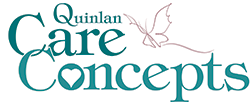Pictured above, (L) Julia Quinlan with portrait of Karen Ann and (R) Karen Ann as a teen. “Her life served a purpose…there has been so much good after a tragedy.”
The Story of Karen Ann Quinlan Made Headlines!
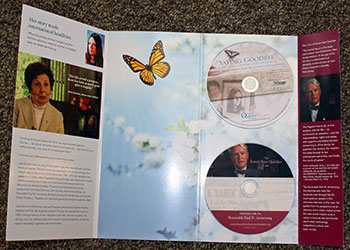
“The film has been extremely helpful! It will add a great deal of value to the course and student understanding of end of life care.” M. E. Day, New York University
In 1980 Julia and Joseph Quinlan founded Karen Ann Quinlan Hospice in loving memory of their daughter. The personal connection between the organization and the people in the community has been the cornerstone of its growth and development.
Their legal battle for their daughter’s right to live without extraordinary means of life support and landmark decision that followed, opened the Quinlan’s’ eyes as to the need for end-of-life care for patients. This awareness led to the creation of the Karen Ann Quinlan Hospice that now serves patients and families in NJ and PA.
The message, “We were started in 1980 by the Quinlan family, and we’re here for your family,” resonates with people seeking hospice. They recognize that the Quinlan family has been in the very same situation, and that the hospice nurses, counselors, social workers, chaplains, and aides are here for one reason – for them.
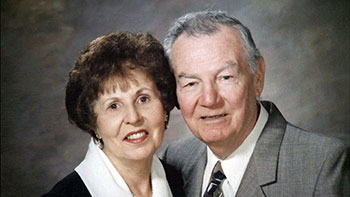
The Quinlans
Before that fateful night in 1975, Joseph and Julia Quinlan were regarded as an average middle-class family living in Landing by Lake Hopatcong, NJ having moved from West New York in 1953. Julia had suffered several miscarriages and a stillbirth but she and husband Joe, devoutly Catholic, still wanted children. They inquired with Catholic Charities in Paterson about adopting a child. In 1954, the Quinlans adopted a baby girl in Scranton, PA, Karen Ann.
Julia stated that when the baby was handed to her, the nun said, “Although this baby comes to you through us, she is a gift from God.” She never crawled, she pulled herself up on nearby furniture and maneuvered around and at seven months, she was walking. “Karen loved sports, she even taught her younger brother how to play,” said Julia. Karen Ann’s father, Joe, was a World War II veteran, who worked in accounting at Warner-Lambert in Morris Plains.
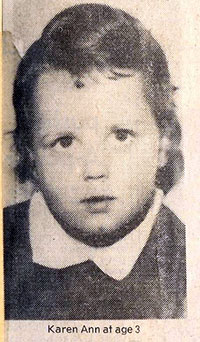
“She was so full of life. She had great laughter; it was just contagious. She was just precious,” said Julia with a warm smile. “She was athletic and beautiful; she had a beautiful singing voice and could play the piano by ear.”
After Julia and Joe had adopted Karen Ann, Julia was pleasantly and surprisingly able to give birth to two other children, Mary Ellen and John. Something Joe and Julia thought could never happen.
The Tragic Story
In 1975, after being out with friends, Karen Ann unexpectedly lapsed into a coma. Her friends found her and delivered CPR while waiting to get her to Newton Memorial Hospital. Upon arrival, doctors could find no specific reason for the coma, and started life support, which included the respirator.
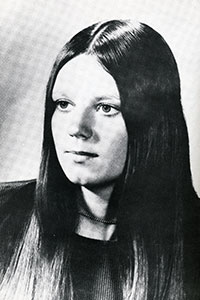
Karen Ann’s state steadily deteriorated and very soon her coma was diagnosed to be irreversible. She was shortly thereafter transferred to St. Clare’s in Denville and her condition was deemed a “persistent vegetative” state from which she could not recover. Unlike the “sleeping beauty” depicted in newspaper articles and sketches drawn by artists who never had a glimpse of Karen, she was not resting quietly. As time went on, her body began to take on distinctive patterns. Karen would thrash wildly at times and would blindly resist treatments and the machines to which she was attached; all while unable to communicate and respond.
Working as a secretary for the rectory at her parish, Our Lady of the Lake in Mount Arlington, Julia spent hours talking and crying with the church’s pastor, Rev. Tom Trapasso. She recalled going out on the porch with the now Monsignor Trapasso and pouring out her broken heart. “He was wonderful. I don’t know what I would have done without him. He was a wonderful friend and supporter,” said Julia.
Julia and Joe Quinlan were now faced with the difficult decision of how to treat their daughter. Julia said Joe was the last to accept the hopelessness of his daughter’s condition and would visit Karen Ann four times a day. Mary Ellen and John, just teenagers at the time, also had to adjust to the heartbreak.
When Joe Quinlan finally accepted the situation, the family sat down and talked the whole thing out. Knowing Karen as they did, they were concerned that she would not want to be kept alive by machines. They felt for Karen Ann’s sake, it would be best if she were removed from the respirator. “Whatever decisions we made, we sat down as a family,” said Julia.
For the Quinlans other two children, they were faced with not only the loss of their sister but were on the verge of losing their privacy. Julia and Joe tried to keep them shielded and out of the public eye as much as possible during the upcoming court battle, however reporters were soon to become an everyday reality; even at the end keeping vigil ten years later camping outside the nursing home where Karen Ann finally died. At one point during that time it was recalled by the family that one reporter went so far to dress as a nun to try to gain entry to Karen Ann’s room. This was the end of their story that began in the 70’s; but not the end for the case, its lasting significance, and for hospice.
The Landmark Court Case

The court case soon became center of a national debate on the definition of life and the right to die; it was considered a case of first impressions. Ordinary people found themselves wrestling with fundamental questions of life and death, as medical and legal issues blended into sociology and theology.
The Quinlans lost their petition in Superior Court, but they persisted, and brought their case before the NJ Supreme Court. Led by legal Counsel Paul Armstrong, now retired Honorable Paul W. Armstrong the NJ Supreme Court set several legal and medical precedents in its 7-to-0 decision on March 31, 1976.
The court held a new interpretation of the right of privacy, and that Miss Quinlan’s interest in having her life-support systems disconnected exceeded the state’s interest in preserving life, so long as medical authorities saw ”no reasonable possibility” that she would recover. The court also ruled that no one could be held criminally liable for removing the life-support systems, because the woman’s death ”would not be homicide, but rather expiration from existing natural causes.”
The unanimous decision also ruled that Joseph Quinlan be appointed as Karen Ann’s guardian and that whatever decision he made regarding her care “should be accepted by society, the overwhelming majority of whose numbers would, we think, in similar circumstances exercise such a choice in the same way for themselves or for those closest to them.” This gave the family the right to determine her medical treatment, including discontinuing extraordinary means.
After the court ruling Karen Ann was gradually weaned from the respirator, and continued to breathe on her own. That year she was moved to Morris View Nursing Home where she lived for nine years being fed through a nasogastric tube. “It was most difficult, to watch your daughter die slowly for 10 years,” said Julia. Instead of the serene form depicted in sketches, Karen Ann’s body was being pulled inward in a kind of “fetal” position. All her joints were flexed and despite attempts by physical therapy to straighten out her bent form, her limbs quickly retracted after therapy sessions. There was no way to prevent the bedsores.
Karen died in her room at the Morris View Nursing Home on June 11, 1985 at 7:01 pm from respiratory failure brought on by acute pneumonia. Her family members had been at her bedside during the days leading up to and including her final moment. “I don’t think you can ever prepare yourself 100 percent for the death of your child,” Julia said. “Karen lived in a state of limbo and my family and I lived in a state of limbo. I grieved for Karen for ten years and then I had to grieve all over again.” “We no longer were able to visit her at the nursing home. I couldn’t brush her hair. I couldn’t talk to her. There was a terrible void. For 10 years it was a way of life, visiting her at the nursing home every day. It was very lonely, very difficult,” said Julia Quinlan. Karen Ann was laid to rest at the Gate of Heaven Cemetery in East Hanover.
National Impacts of the Ruling
The ruling was precedent setting and the court invited the medical profession to use the guidelines from the case in the future in which doctors could agree to the private pleas of relatives of pain-ridden, terminally ill patients and withhold extraordinary measures to keep them alive.
The case led to the requirement that all hospitals, nursing homes and hospices have ethics committees. In addition, the Quinlan case led to the creation of living wills, often called advance directives. These documents outline the personal wishes of an individual in regard to their choices of “extraordinary means” to maintain life if there is no hope of recovery and to be able to die with dignity. The living will provides a means that no one else should have to be under the personal burden of making those decisions for their loved one.
The decision had repercussions for years, and it became a touchstone for legal struggles in other states. In 1981, a Presidential Commission recommended that states endorse the concept that human life ended when the brain stopped functioning.
Why a Hospice?
Julia and Joe Quinlan took their own personal tragedy and transformed it into a way to help other people. Determined to see that the treatments, rights and wishes of terminally ill patients and their families be respected, they opened the hospice on April 15, 1980, leading the nation in the pioneering of hospice care. They took their seed money from their first published book Karen Ann: the Quinlans Tell Their Story and applied it the hospice and the Karen Ann Quinlan Memorial Foundation. The Quinlans pledged through the Memorial Foundation in 1980 to never turn a patient away because of an inability to pay. That pledge has held through the years, sustained with fundraising efforts and the steadfast support of individuals, groups and business that have generously embraced the mission of hospice.
Humble Beginnings
Initially the hospice occupied an ancillary office at Newton Memorial Hospital, (now Newton Medical Center) with a small staff and group of volunteers. Generous donors immediately propelled it forward. In 1984 the agency became Medicare and Medicaid Certified, which poised it to grow enormously.
Growth
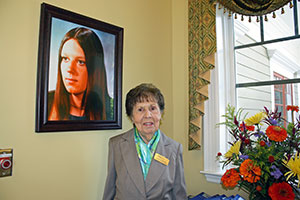
While serving Sussex County, NJ the hospice then expanded its hospice services to Warren County in 1988, and opened the current Newton administrative office in 1994. The hospice acquired a license from the PA Department of Health, and opened the office in Milford, PA. In 2000 the Joseph T. Quinlan Bereavement Center opened a location in Hackettstown, and in 2010 a second and main office in Newton, NJ. The Karen Ann Quinlan Hospice have a staff reaching over 100 employees, including a core of trained volunteers who offer their time throughout the year. In the fall of 2014, a long time dream of Julia came true and The Karen Ann Quinlan Home for Hospice opened its doors to patients. Julia speaks to her dream.
Today
The hospice is a non-profit agency, with a 501 (c) (3) status. It is governed by the Karen Ann Quinlan Memorial Foundation Governing Board, and is managed by the Executive Director along with a Team of Key personnel and a professional team of nurses, counselors, chaplains, social workers, aides and volunteers who presently serve patients and families in Sussex and Warren Counties, New Jersey, and the Pike County area of Pennsylvania. Hospice service is available twenty-four hours a day.
Tim O’Brien, a reporter for the New Jersey Law Journal, covered the Quinlan story for the Star-Ledger. “Now it is an accepted part of the landscape… [It’s] become part of the fabric of society. Ordinary people think about living wills and telling others their wishes about extraordinary means,” O’Brien said, “It’s talked about openly, not furtively.”
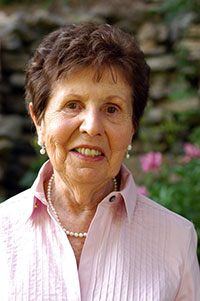
“The biggest thing was for society to openly face that issue and deal with it,” he said. “Virtually every court in the country has followed that decision.”
Julia says she is thankful that her family has come through this ordeal intact and pointed out that many families may not have survived the kind of pressure and stress they experienced. Mary Ellen and John “have grown to be wonderful people. They serve or have served on the Hospice board,” she said. They also live in Wantage. Joseph Quinlan died on December 7, 1996 peacefully at his Wantage home under hospice care.
In reflecting over the many years and Karen Ann’s life, Julia said, “Her life served a purpose…there has been so much good after a tragedy.” She said the hospice is designed to assist patients and their families during a most difficult situation.
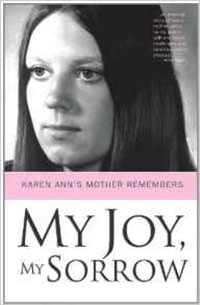
With an aging population and a growing preference for hospice during one’s final days, and thanks to the dedication of so many, Karen Ann Quinlan Hospice will be here to continue to help.
“I have no regrets. We would do the same thing all over again. Karen Ann would never, never have wanted to live that way. I thank God we were able to make the decision as a family and still be a close loving family after it all,” Julia said. Her most recent book, My Joy, My Sorrow: Karen Ann’s Mother Remembers is available through Amazon.com
Order “My Joy, My Sorrow: Karen Ann’s Mother Remembers” from Amazon.com
